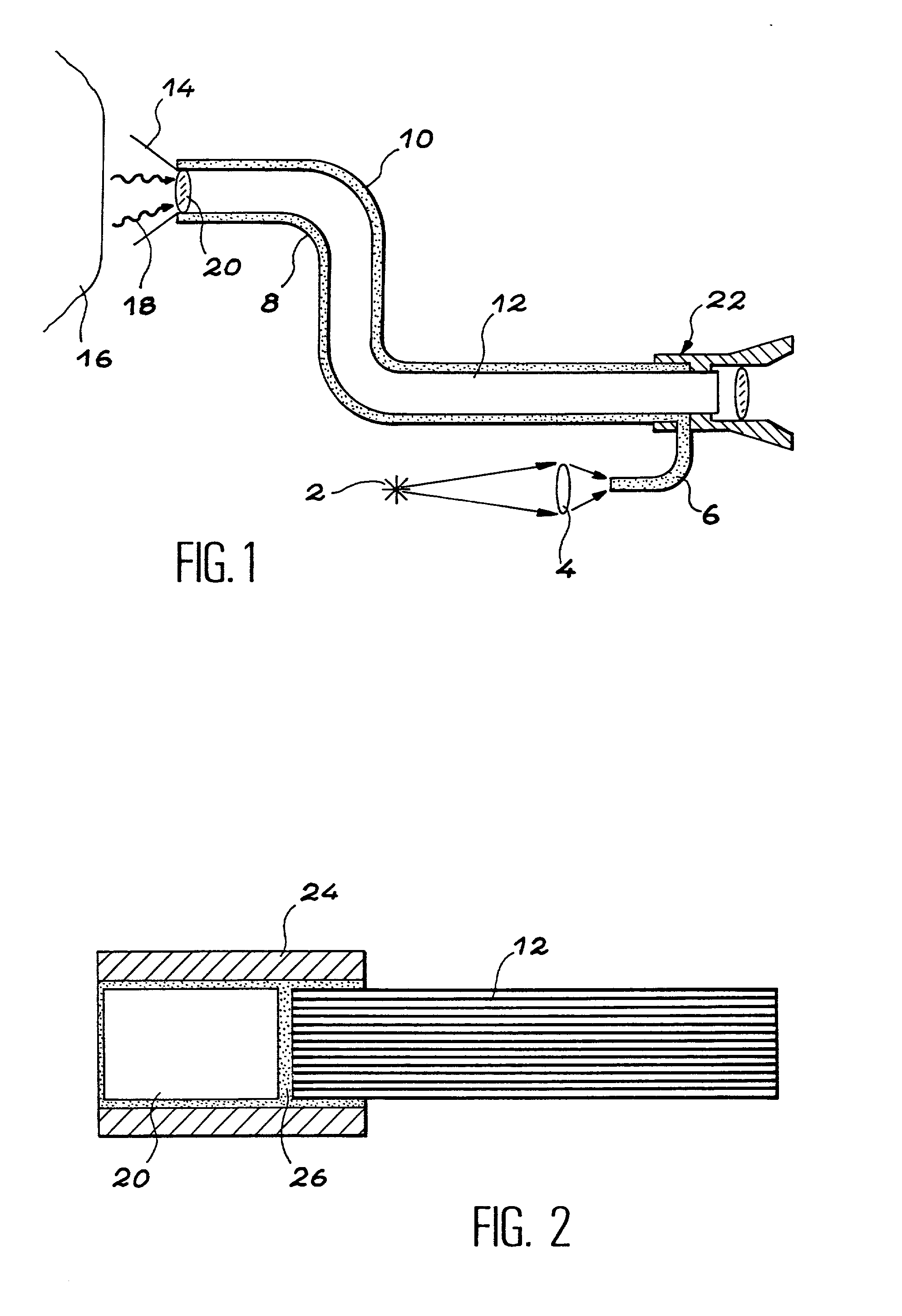Method and device for assembling optical components or an optical component and a substrate
a technology of optical components and substrates, applied in the direction of instruments, cladded optical fibres, optics, etc., can solve the problems of inability to generally apply the procedure to the production of two random optical components, deformation of contact surfaces, and inability to ensure the perpendicularity of the interface with the fibre axis in this procedure, etc., to achieve good temperature control, increase the adhesion, and reduce the effect of contacting surface deformation
- Summary
- Abstract
- Description
- Claims
- Application Information
AI Technical Summary
Benefits of technology
Problems solved by technology
Method used
Image
Examples
Embodiment Construction
[0031] The first object of the invention is a process for assembling an optical component and a substrate, which makes it possible to avoid the disadvantages described hereinbefore.
[0032] The invention firstly relates to a process for the assembly of an optical component with a substrate comprising:
[0033] a first stage of depositing a glass layer on at least one of the two faces or surfaces to be contacted,
[0034] a second stage of contacting the two faces or surfaces,
[0035] a third stage of heating the glass, leading to a weld between the optical component and the substrate.
[0036] The invention also relates to a process for the assembly of two optical components making it possible to avoid the disadvantages referred to hereinafter and which can in particular be applied to the implementation of imaging devices, e.g. endoscopes.
[0037] The invention therefore also relates to a process for the assembly of a first and a second optical components comprising:
[0038] a first stage of deposit...
PUM
| Property | Measurement | Unit |
|---|---|---|
| distance | aaaaa | aaaaa |
| distance | aaaaa | aaaaa |
| glass transition point | aaaaa | aaaaa |
Abstract
Description
Claims
Application Information
 Login to View More
Login to View More - R&D
- Intellectual Property
- Life Sciences
- Materials
- Tech Scout
- Unparalleled Data Quality
- Higher Quality Content
- 60% Fewer Hallucinations
Browse by: Latest US Patents, China's latest patents, Technical Efficacy Thesaurus, Application Domain, Technology Topic, Popular Technical Reports.
© 2025 PatSnap. All rights reserved.Legal|Privacy policy|Modern Slavery Act Transparency Statement|Sitemap|About US| Contact US: help@patsnap.com



